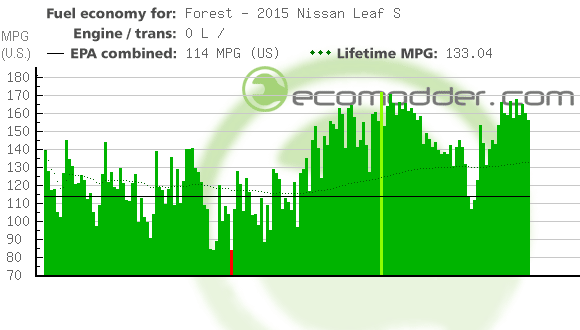So I'm new to the LEAF, and I'm wondering about ways to maximize range. Are there general tips? I feel like it's probably the opposite of driving a gas car.... let me give an example.
I visit one place that's about 16 miles away via highway. In my ICE car, I usually drive on a route that takes 12 of that on the highway and the rest of that on in-town roads. This highway route actually takes me a little bit past the venue and I have to back-track, but it seems like the way to go for ICE efficiency and it shaves about 2 minutes off the trip.
Now, if I go to this place through town, I'm only on the highway about 9 miles, and then there are 5.5 miles of in-town roads. This route, while shorter in mileage, is actually slower and with an ICE, probably burns more gas.
So what is the mindset for trips like these, when you have a choice of highway/street? Am I going to be more efficient by avoiding highways when possible? Will the braking and lower speed on trips like these be helpful? And what about ECO mode? Would you use it in this situation? How often are people using ECO mode?
Thanks again! This has been a great forum so far.
I visit one place that's about 16 miles away via highway. In my ICE car, I usually drive on a route that takes 12 of that on the highway and the rest of that on in-town roads. This highway route actually takes me a little bit past the venue and I have to back-track, but it seems like the way to go for ICE efficiency and it shaves about 2 minutes off the trip.
Now, if I go to this place through town, I'm only on the highway about 9 miles, and then there are 5.5 miles of in-town roads. This route, while shorter in mileage, is actually slower and with an ICE, probably burns more gas.
So what is the mindset for trips like these, when you have a choice of highway/street? Am I going to be more efficient by avoiding highways when possible? Will the braking and lower speed on trips like these be helpful? And what about ECO mode? Would you use it in this situation? How often are people using ECO mode?
Thanks again! This has been a great forum so far.





